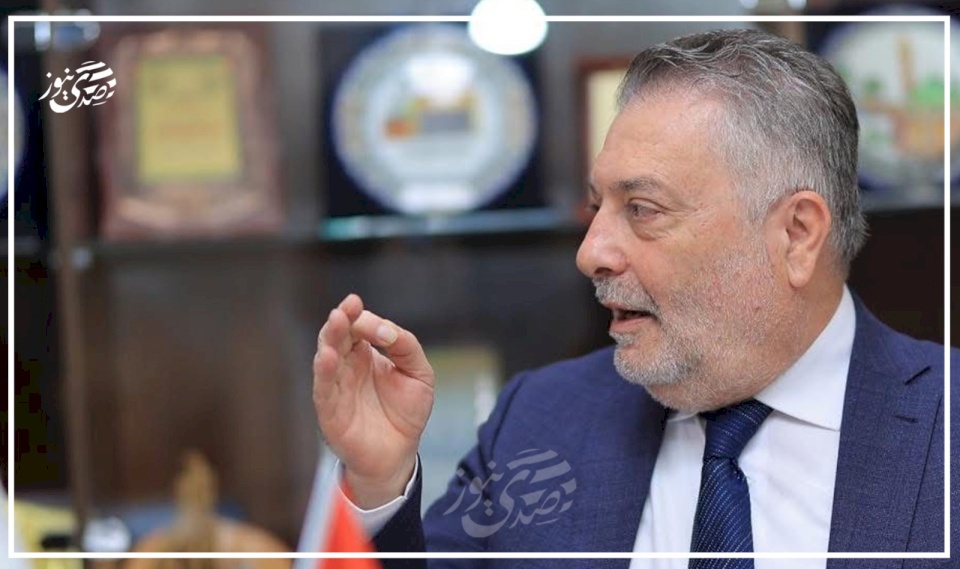
Articles
Palestinian Banks in the Eye of the Storm: The Economic Artery is Choking
SadaNews - At a time when the Palestinian economy stands on the brink of collapse, Palestinian banks have not escaped the repercussions of the crisis; rather, they have become at the heart of the storm, facing increasing pressures between the hammer of financial crises and the anvil of political challenges, transforming from an active player in development to a party struggling for survival.
Banks are a cornerstone of stability and growth in any economy, but the complex Palestinian reality - due to occupation, division, and successive crises - has rendered this sector fragile despite apparent stability indicators. The World Bank's 2024 report highlighted the exacerbating financial crisis through its analysis of public spending levels and the authority's reliance on the local banking system. The updated 2025 report reiterated the seriousness of these trends, warning of direct repercussions that threaten banking and financial stability as a whole.
The Palestinian banking system consists of 15 banks (7 local and 8 foreign). However, despite this number, it is observed that more than half of the banking facilities in some years go to public sector employees, placing banks in a dual risk when the financial relationship between the government and the occupation regarding clearance funds worsens. Conversely, the percentage of financing directed toward productive projects does not exceed 15-20% of total facilities, while developmental financing tools are nearly absent in Jerusalem due to the legal and political complexities imposed on the city.
In the absence of a comprehensive developmental vision, banks turn into consumer financing entities, dominated by personal loans and financing for cars or homes, at a time when the Palestinian market needs productive investments and operational projects.
This approach, based on linking facilities to fixed income sources (such as employee salaries), contributes to reducing short-term risks on one hand, but weakens the banks' ability to contribute to economic momentum on the other, making them more vulnerable to exposure during any turbulence in government financial flows.
Moreover, the challenges facing the banking system are not limited to the relationship between banks and the government; they extend to the political and security environment that hinders financial transfers and imposes Israeli restrictions on the movement of funds, especially shekels, leading to a genuine liquidity crisis that banks suffer from, putting them under threat of sanctions or gradual collapse if these restrictions continue.
Additionally, the escalating crisis of accumulated shekels within the banking system, due to Israeli banks' reluctance to accept the cash surplus, deepens the liquidity crisis and weakens banks' capacity for lending or even maintaining their daily obligations to their customers. At the same time, the Monetary Authority faces a complex equation between the need for intervention to protect the banking system and the constraints imposed on its monetary sovereignty.
Estimates suggest that the percentage of borrowers from public sector employees exceeds 50% of the total number of borrowers, a percentage that reflects the extent of the banking system's linkage to the stability of government salaries. Furthermore, the percentage of economic projects financed by banks in Jerusalem and its surroundings remains extremely limited, creating a funding gap in one of the most sensitive areas in terms of the need for economic and political support.
Despite these challenges, the efforts made by banks and the Monetary Authority to maintain relative stability in the banking system cannot be denied, through precautionary measures, financial allocations, and restrictions on unsafe lending. However, this stability remains fragile and dependent on the continuity of external financial flows and the government's ability to withstand, a situation that has become fraught with risks.
The current reality of Palestinian banks is a direct reflection of the fragile political and economic environment, and it is a serious indicator of the depth of the crisis. Since banks represent the artery of the economy, any choking within them will reflect on all aspects of economic life, from the labor market to investment, and from individuals' ability to spend to companies' capacity for growth.
Thus, safeguarding the banking sector requires an integrated movement that includes:
- Expanding the productive base of the Palestinian economy to create alternative and independent income sources.
- Strengthening financing tools allocated for small and medium-sized projects.
- Political and international pressure to lift Israeli restrictions on cash transfers.
- Restructuring the relationship between banks and the government to reduce excessive mutual dependence.
- Building sovereign tools to enhance the Monetary Authority's ability to intervene effectively during crises.
- Establishing an emergency banking fund that strengthens the capacity to confront short-term crises.
In conclusion, the banking crisis is no longer merely a technical matter addressed through financial measures; it has become a matter of sovereignty in its own right, requiring a national strategic vision that redefines the role of banks as a lever for the economy rather than just a tool for recycling crises. The protection of the banking sector cannot be separated from the Palestinian economic independence project, which begins with liberating from financial dependency and passes through reclaiming sovereignty and building a robust productive economy.
This article expresses the opinion of its author and does not necessarily reflect the opinion of Sada News Agency.
Read Also

UN Resolution Without Claws

In the Moral Confrontation with Israeli Brutality

Reform Under Test: Should We Fix the Numbers or Fix the Path?

Gaza: Between the Dilemma of Rescue and the Entitlement of National Liberation

Their Positions Hide Their Hatred for Gaza

Their goods were returned to them

Between Exaggeration and Reality: Is the Gap Between Israel and the United States Really W...

